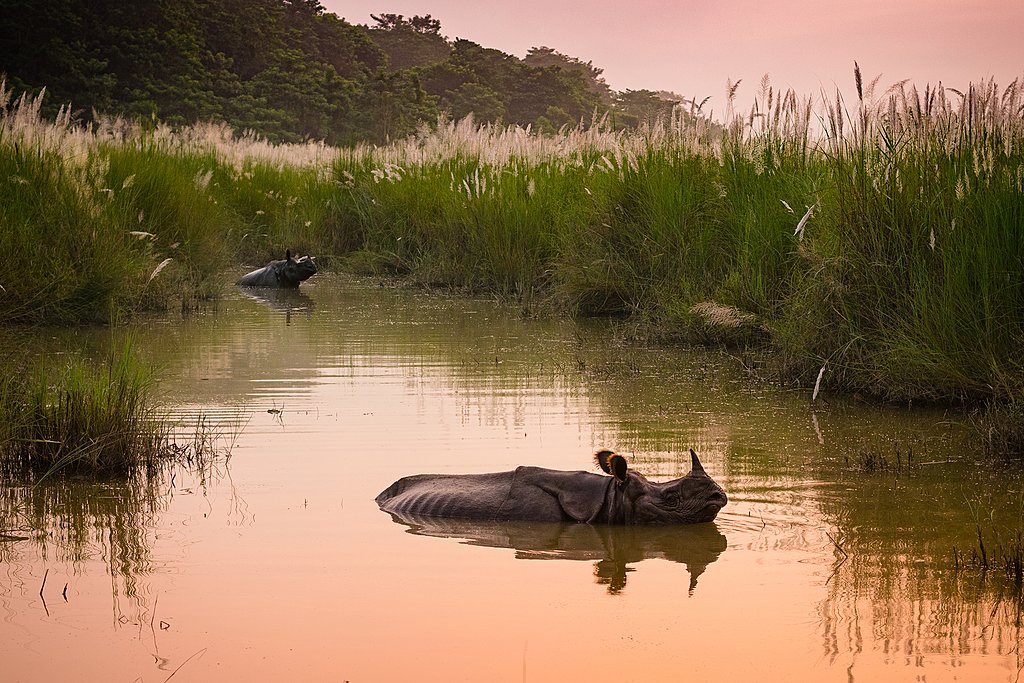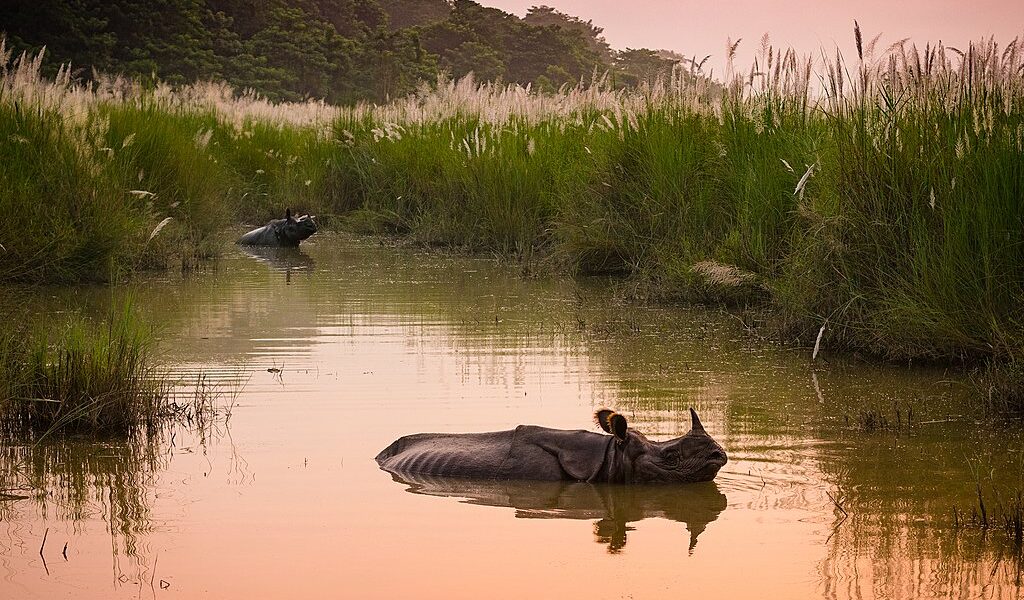
While January is the middle of winter in Nepal, travelers shouldn’t hesitate to visit. Manageable temperatures, crystal-clear skies, and excellent low-altitude hiking make this a surprisingly perfect winter destination. Plus, this is the best month for spotting wildlife in Chitwan National Park. Read on to discover why you can (and should!) start your year with a trip to Nepal.
Nepal in January: A Comprehensive Guide
Nepal, a land of breathtaking landscapes and diverse cultures, presents a unique experience for travelers in January. The country experiences a significant variation in climate, transitioning from the tropical plains of the Terai to the temperate mid-hills encompassing Kathmandu and Pokhara, and culminating in the frigid heights of the majestic Himalaya. Regardless of your chosen destination within this fascinating nation, it’s essential to remember that January consistently marks the coldest period throughout the year.
In the bustling capital city of Kathmandu, daytime highs may reach a relatively mild 64°F. However, the perceived temperature can often feel considerably lower due to factors such as wind chill and humidity. Pokhara, renowned for its serene lakes and stunning mountain vistas, typically enjoys slightly warmer temperatures and boasts clearer skies compared to Kathmandu, making it an appealing alternative for those seeking more pleasant weather conditions. Down in Chitwan, daily temperatures can still soar to a comfortable 76°F, creating an ideal environment for exploring the region’s natural beauty. In the Terai region, the presence of fog is a common occurrence during this time of year, potentially impacting visibility and travel plans. Snowfall in the high-altitude areas of the Himalaya can significantly impact trekking trails, rendering them more challenging and demanding due to icy conditions and increased cold. However, it’s important to note that rainfall is practically non-existent across the majority of the country during January, making it a favorable time for exploring regions outside the high mountains.
The month of January also corresponds with a period of reduced tourist activity throughout Nepal, resulting in fewer crowds at popular destinations. Both Kathmandu and Pokhara experience a more relaxed atmosphere, offering visitors a chance to immerse themselves in the local culture without the hustle and bustle of peak season. Consequently, many hotels in the area offer attractive low-season discounts, making it an advantageous time for budget-conscious travelers seeking excellent deals and prioritizing lower-elevation activities.
While January might not be the most popular time for trekking, it still presents exciting opportunities for those willing to embrace the cold. The trails are undeniably quieter than during the peak seasons, offering a more solitary and immersive experience. However, accessible trails at lower altitudes are readily available for exploration. Provided you are adequately prepared for the cold weather with appropriate clothing and high-quality sleeping bags, you can revel in the crystal-clear mountain views that often characterize the January hiking season. It is crucial to bear in mind that regions situated in the rainshadow of the Himalaya, such as Upper Dolpo or Upper Mustang, may become inaccessible during this time. These areas may have extremely limited or even no available accommodation options throughout the winter months. Careful planning and research are essential if you intend to venture into these remote locations.
When considering destinations to visit in Nepal during January, it’s advisable to prioritize lower-altitude treks unless you possess extensive trekking experience and specialized training in snow conditions at high altitudes. For those seeking a taste of the Everest region, a thrilling option involves flying from Kathmandu to the airstrip in Lukla and embarking on a trek to the vibrant Sherpa town of Namche Bazaar. From Namche Bazaar, you can further explore the picturesque village of Thame, renowned for its stunning monastery perched precariously on the cliffs. Alternatively, you can continue your journey to Tengboche, a significant destination for climbers and trekkers who visit its famous monastery to seek blessings from the revered Head Lama. Other noteworthy treks suitable for January include the Khopra Danda trek and various trails situated near the Kathmandu Valley.
For wildlife enthusiasts, late January through March offers an ideal window for embarking on a thrilling jungle safari adventure in the renowned Chitwan National Park. During this period, the dense elephant grass that thrives in the jungle is systematically cut back, significantly improving visibility and increasing the chances of spotting diverse wildlife. Although animals inhabit the protected area year-round, they can be more challenging to observe when concealed by the thick vegetation.
A diverse range of activities await visitors to Nepal in January. In addition to jungle safaris and lower-altitude trekking, engaging in cultural activities in Kathmandu and Pokhara, as well as experiencing the thrill of paragliding, are all viable options, provided you are adequately prepared for the cooler temperatures. Some experts even suggest that January presents the optimal conditions for mountain biking, as the trails reach their driest state of the year, while clear skies amplify the already breathtaking views.
Traditional Nepali festivals, encompassing both Hindu and Buddhist celebrations, generally adhere to a lunar calendar. This means that the timing of these festivals can fluctuate from year to year, with a festival that falls in January in one year potentially occurring in December or February the following year.
Two festivals that are frequently observed in January, although not consistently, are Lhosar and Basanta Panchami. Lhosar represents a significant Buddhist festival, celebrated on the first day of the new year by Nepali ethnic groups with roots in Tibet, particularly the Gurung, Tamang, and Sherpa communities. Basanta Panchami, on the other hand, is a Hindu festival dedicated to the worship of the goddess Saraswati, the embodiment of knowledge and the creator of arts, education, and music. This festival also symbolizes the end of winter and the advent of spring.
For those contemplating a journey to Nepal in January, consider exploring itineraries such as the Khopra Danda trek, also known as the Khopra Ridge Trek, which serves as an excellent alternative to the more popular and often crowded Ghorepani trek. The Khopra Danda trek takes you to higher altitudes, rewarding you with unparalleled views of the majestic Annapurna range. Spanning up to eight days and reaching a maximum elevation of nearly 12,000 feet, this moderate trek is a fantastic option for experiencing the beauty of Nepal in colder weather. Another notable option is the Ghandruk Trek & Chitwan Visit, which combines two quintessential Nepal experiences: the Ghandruk trek in the Annapurna foothills and a visit to the Chitwan National Park in the lowlands of Nepal.
In preparation for your trip, remember that January in Nepal offers a unique blend of cultural experiences, natural beauty, and adventure, all while being less crowded than peak tourist seasons. By being prepared for the cooler temperatures and packing appropriately, you can make the most of your journey. Remember to check local weather forecasts and festival schedules closer to your travel dates to ensure a seamless and unforgettable experience in Nepal. Embrace the serenity and tranquility of this enchanting country during the quieter month of January.
B-1739

